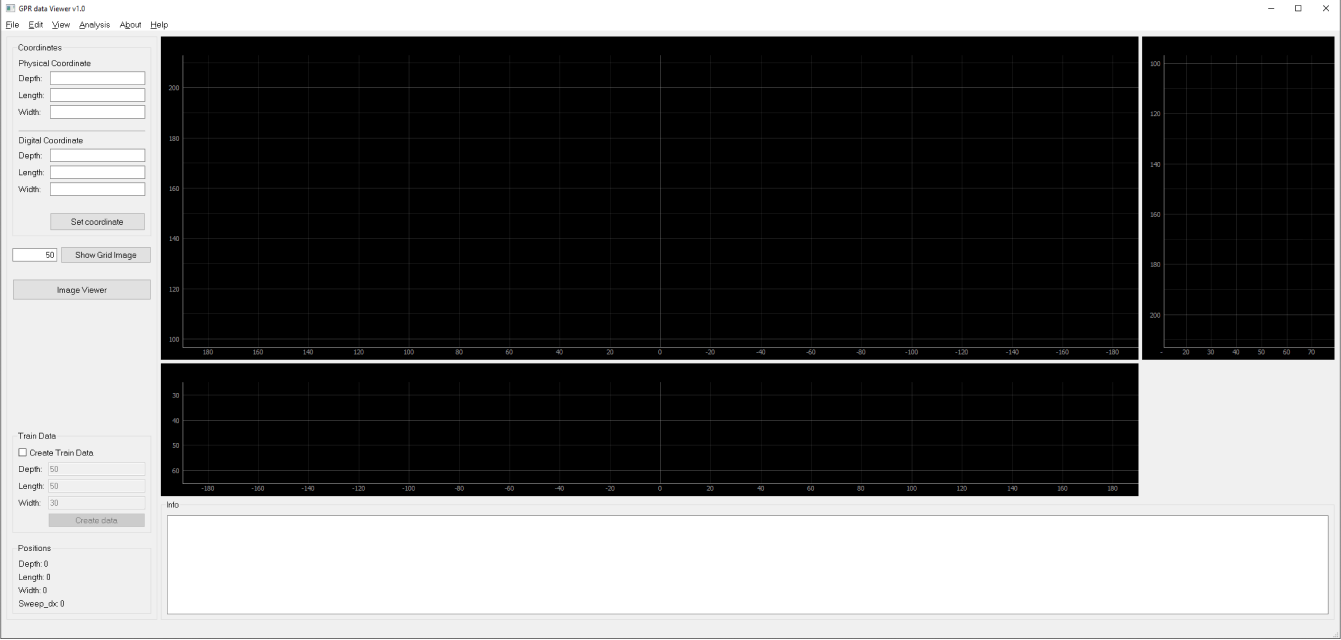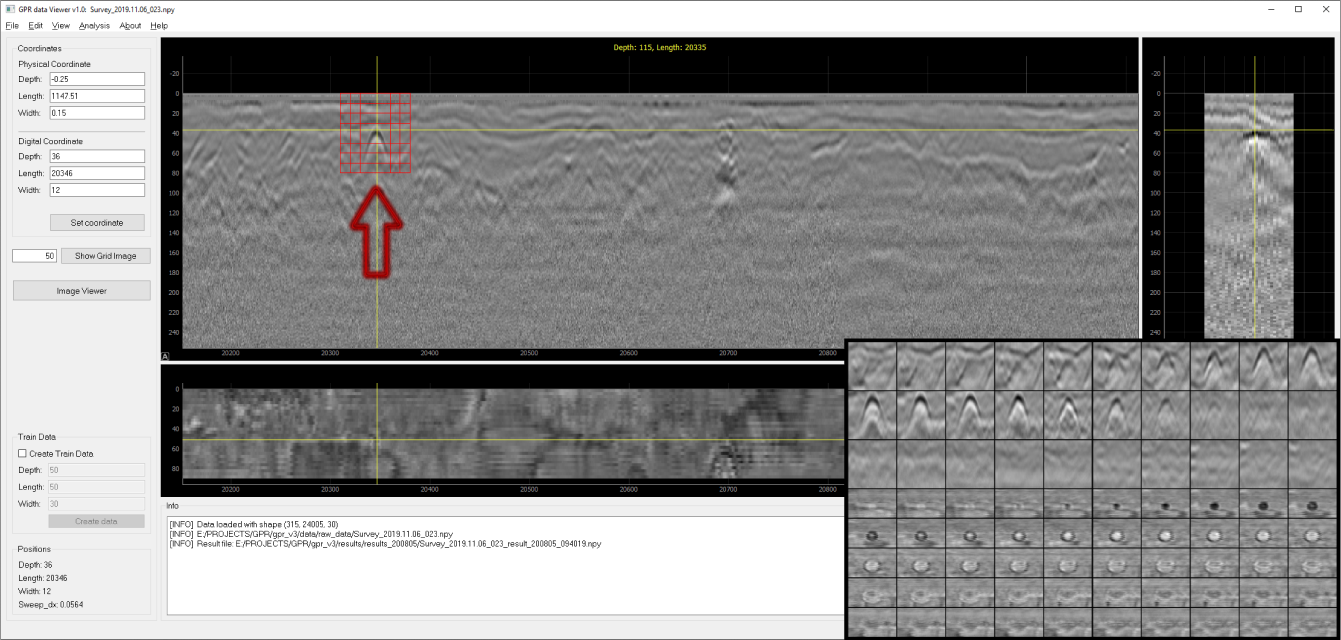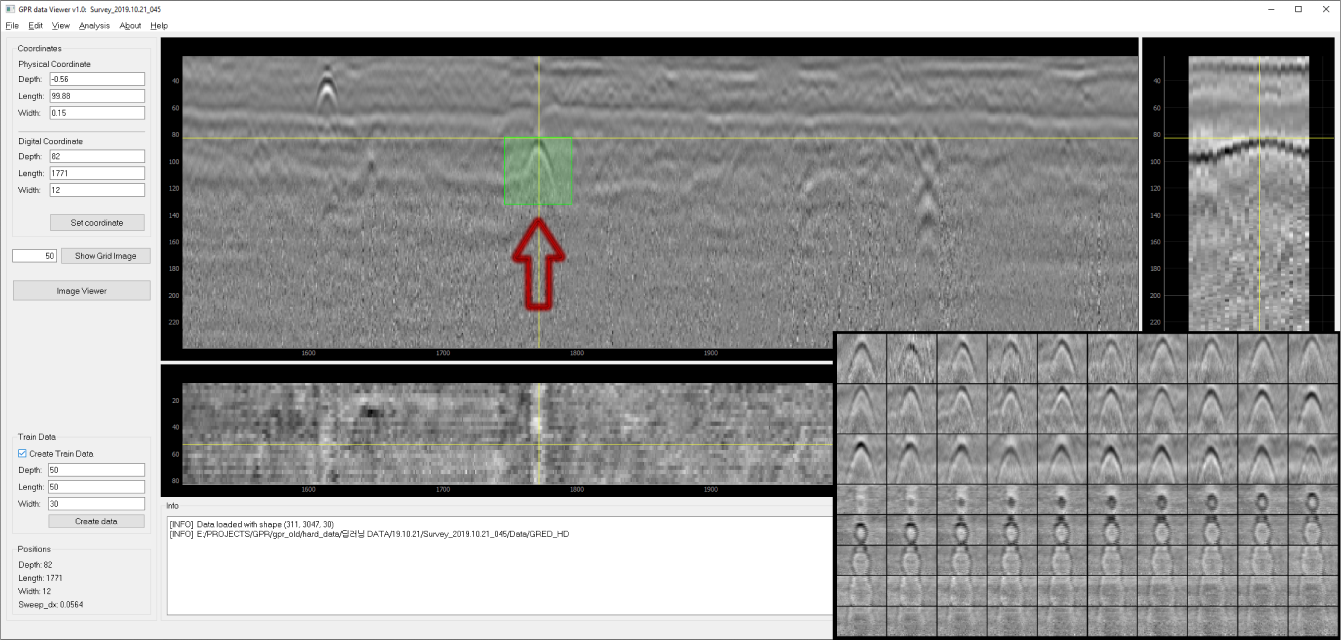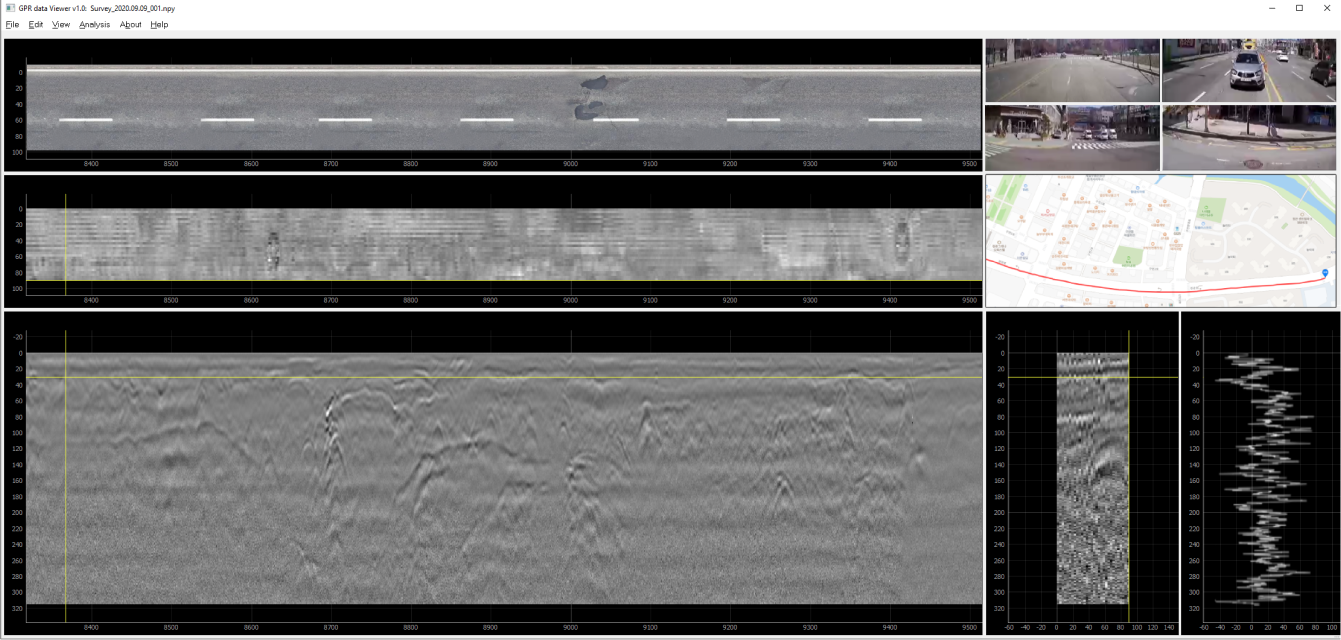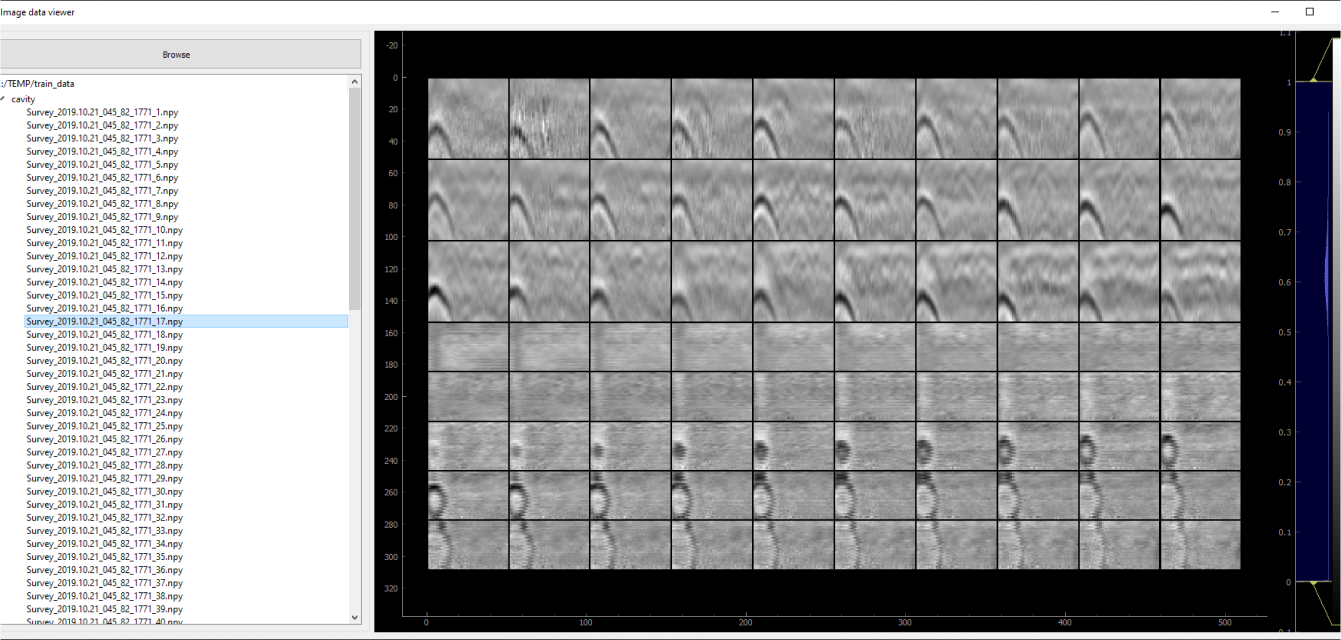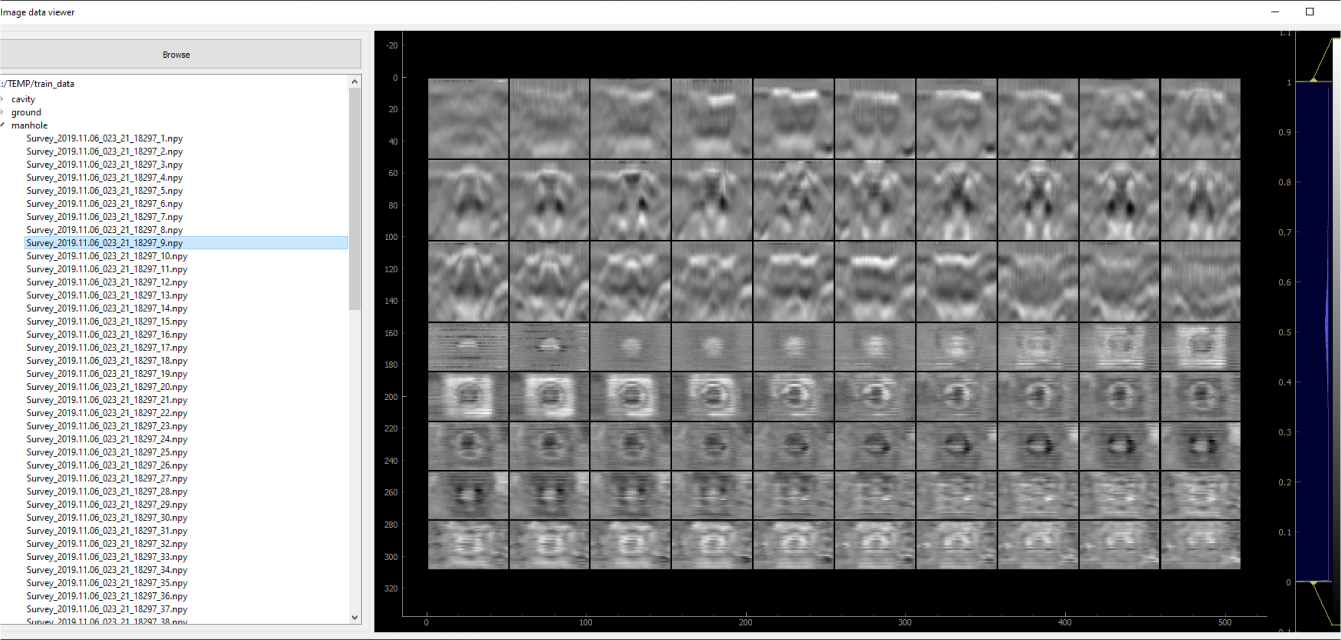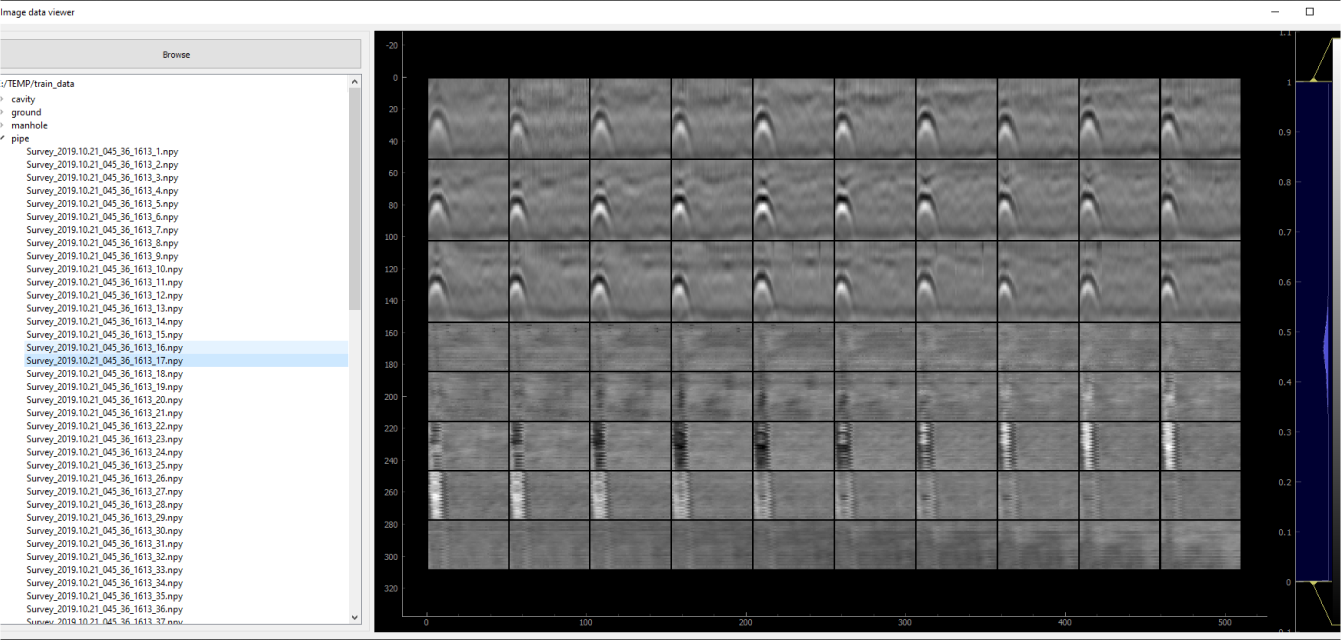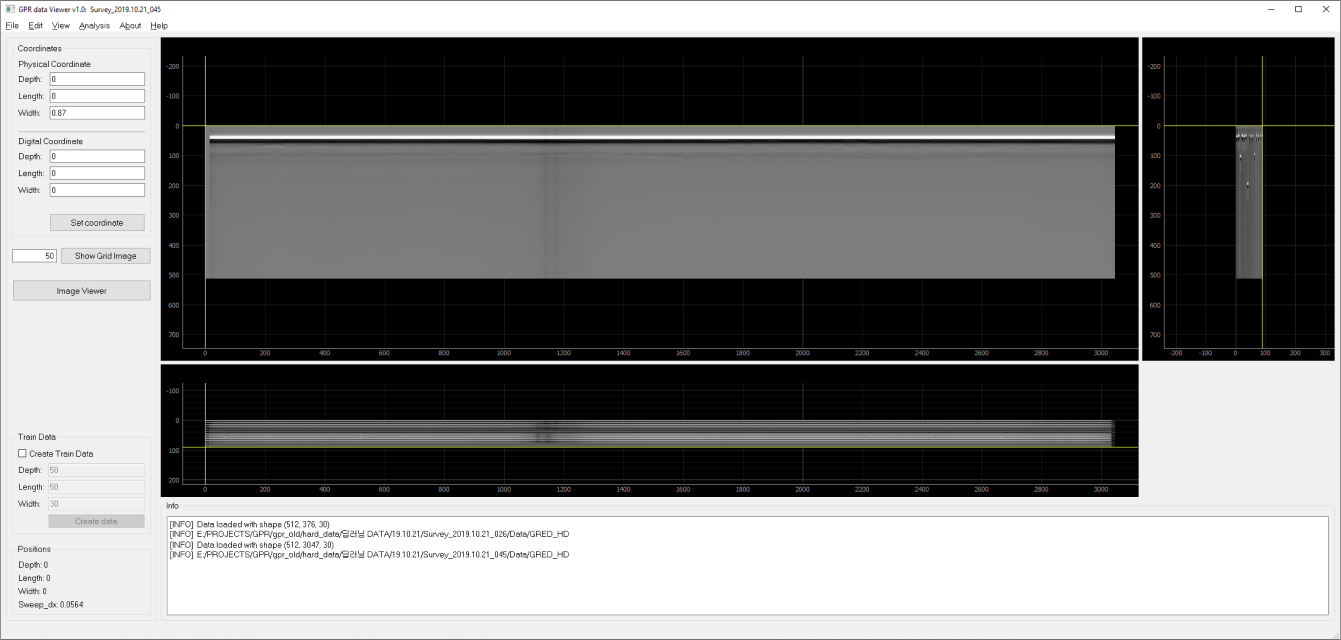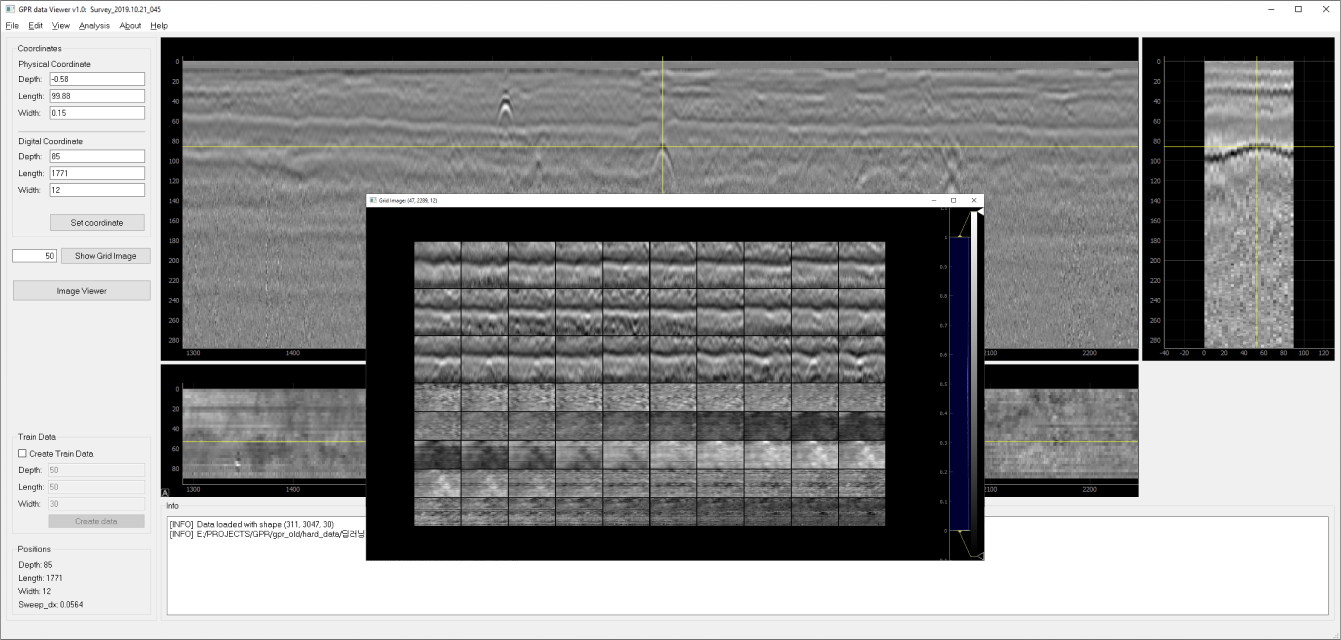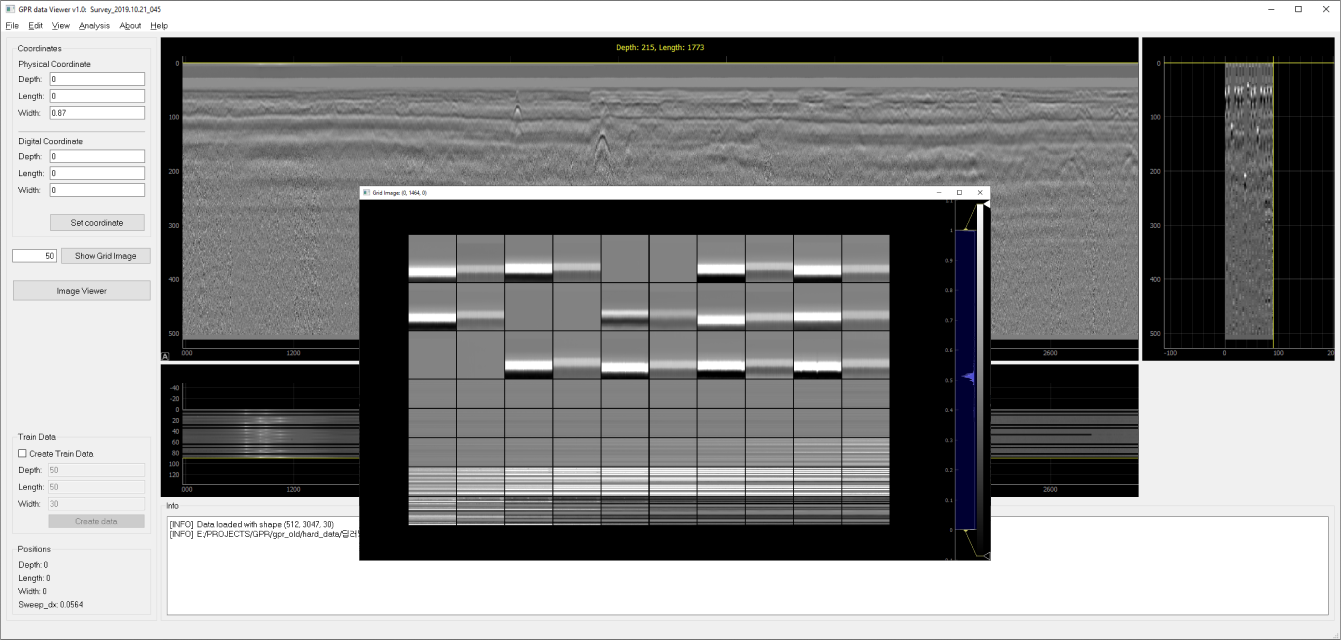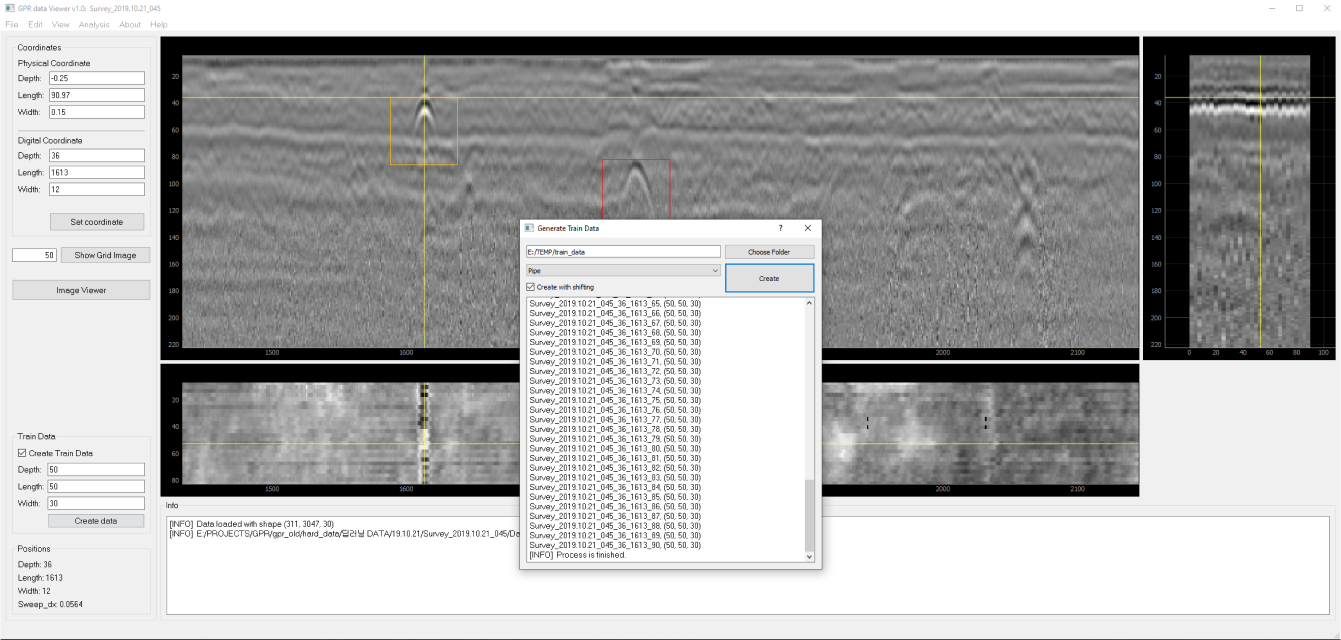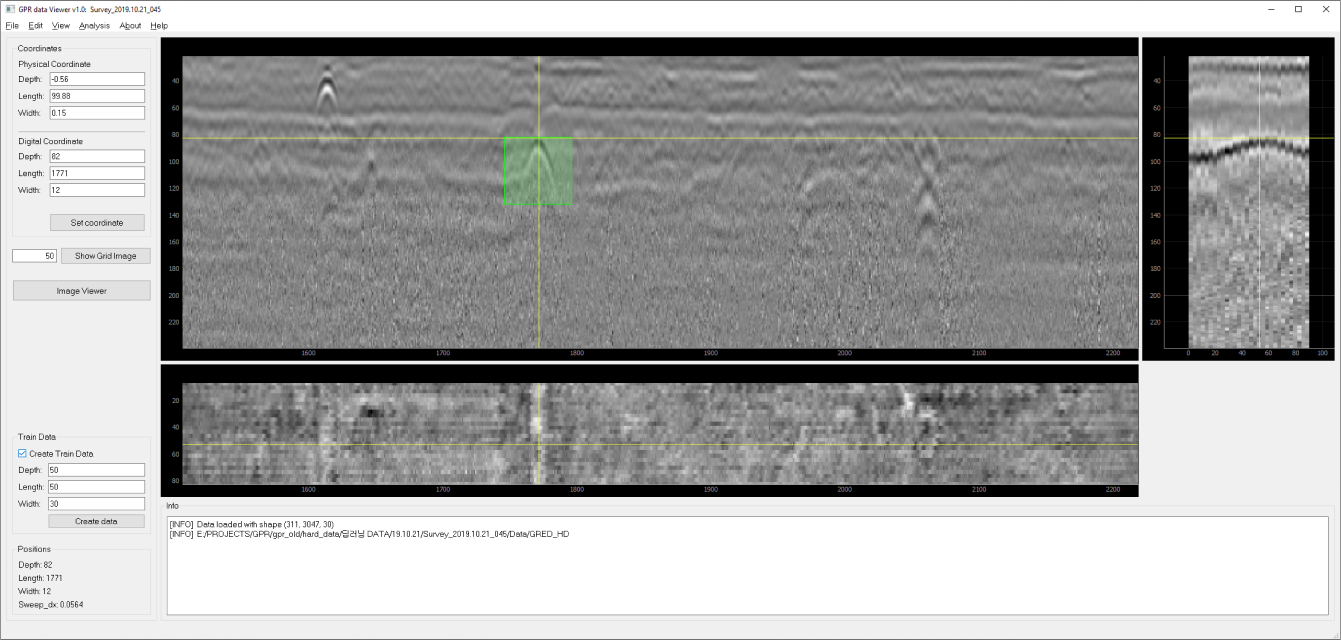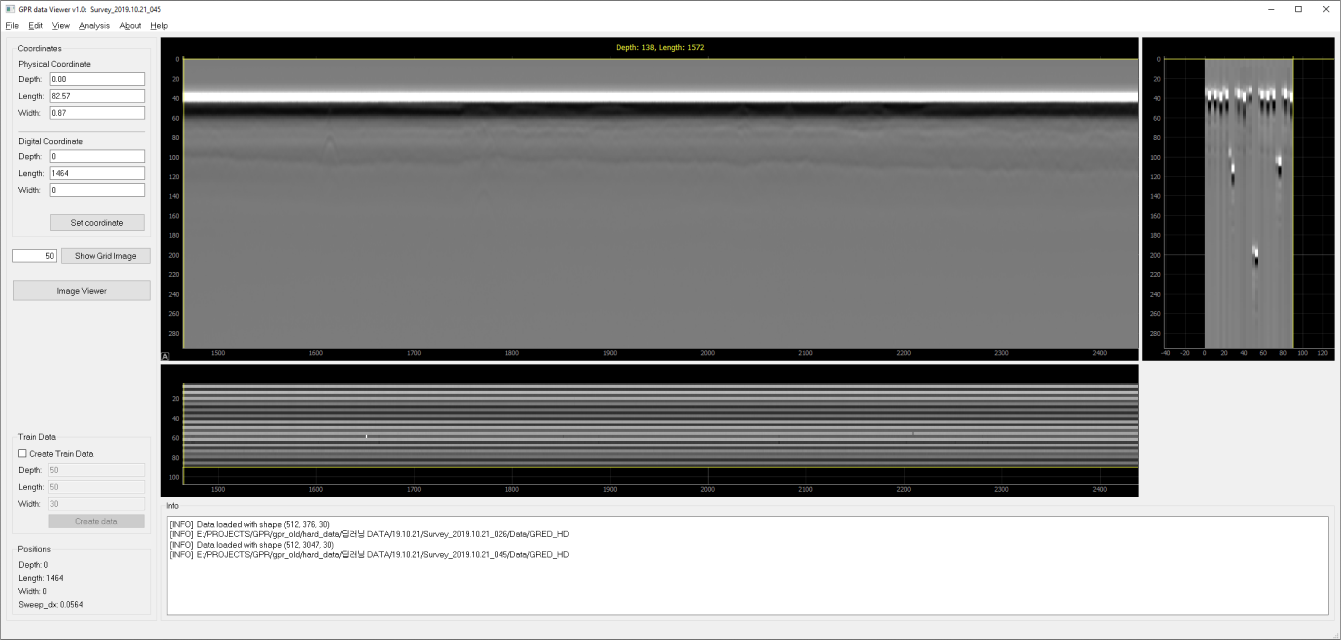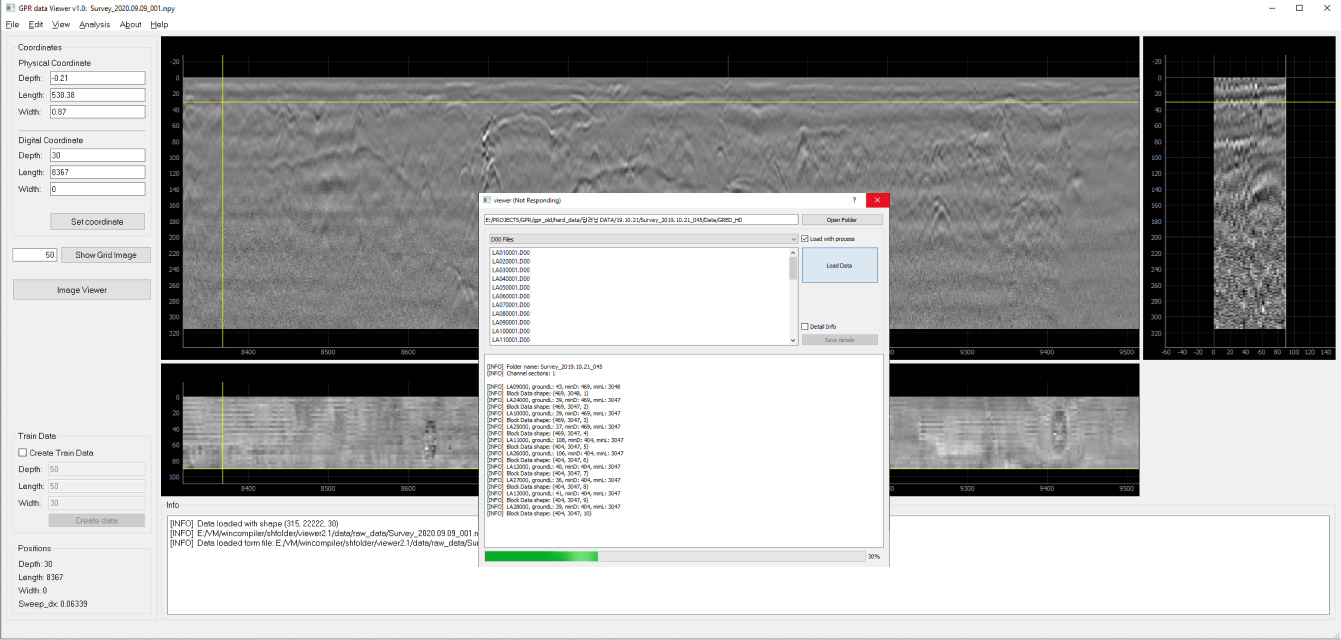Underground Cavity Detection
Ground Penetrating Radar, a non-intrusive technology, is a valuable instrument employed to detect hidden cavities and subterranean voids concealed beneath the Earth's surface. This advanced system emits radar signals deep into various surfaces, such as pavement and soil, adeptly capturing the ensuing reflections. Subsequently, the collected data undergoes meticulous analysis through a sophisticated neural network, precisely discerning the precise whereabouts of these concealed voids.
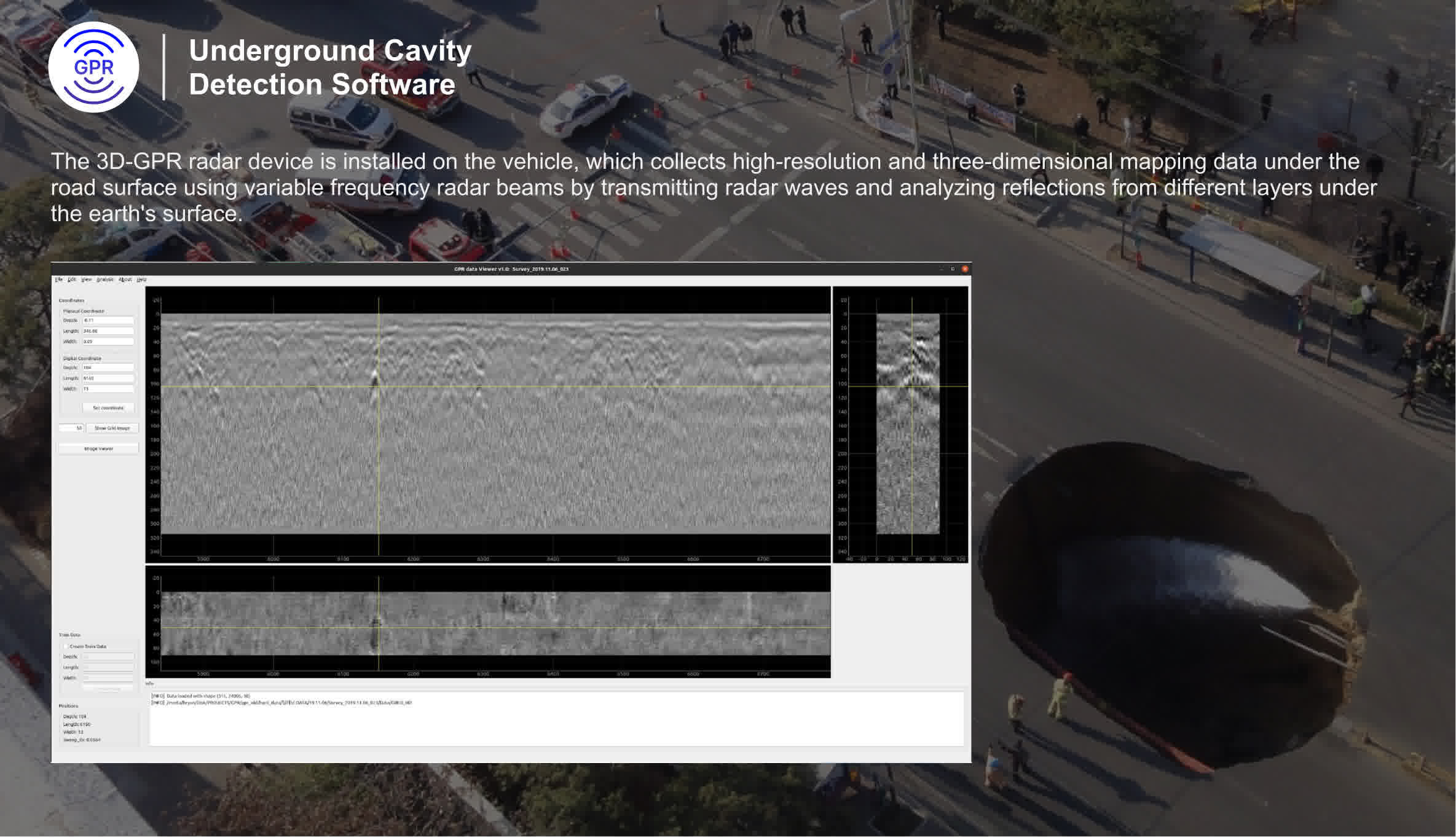
Detecting underground cavities is a critical task for various industries, including construction, geology, and civil engineering. Traditional methods often involve time-consuming and costly manual surveys, but with the advent of Artificial Intelligence (AI) and advanced Ground Penetrating Radar (GPR) technology, a more efficient and accurate solution has emerged. Our innovative software solution leverages AI to analyze 3D GPR data, making underground cavity detection faster, more precise, and cost-effective.
3D-GPR Underground Cavity Detection Software
Experience a revolutionary approach to subsurface exploration with our 3D-GPR Underground Cavity Detection Software. This cutting-edge technology seamlessly integrates with 3D Ground Penetrating Radar devices mounted on vehicles.
By emitting variable frequency radar beams and analyzing reflections, it provides high-resolution, real-time, and comprehensive 3D maps of underground cavities. Unlock efficiency, safety, and precision in your projects, whether in construction, environmental assessment, or infrastructure development.
Explore the unseen depths beneath the surface and transform the way you work with our software.
Interactive 3D Visualization for Subsurface Exploration
Our software features a cutting-edge 3D visualization tool for in-depth subsurface exploration. Users can delve into the underground world, analyze Ground Penetrating Radar (GPR) data, and uncover hidden insights.
This tool provides precise information about underground voids and structures, aiding professionals in construction, engineering, and exploration projects. It enhances decision-making, reduces risks, and ensures project success. Unearth the mysteries beneath the surface with our interactive 3D visualization tool. In the control panel, our data acquisition section lets users collect training data with customizable size parameters (depth, length, and width). Users can select a folder for saving training data and specify the data type. The system automatically organizes data into folders for each class.
AI-Powered Underground Cavity Detection
Our solution is at the forefront of innovation in underground cavity detection, thanks to our AI-based deep learning algorithm. This cutting-edge technology allows us to accurately identify not just underground cavities but also three other types of objects, setting a new standard in subsurface exploration. In contrast to previous software solutions that rely solely on two-dimensional radar images with significantly lower detection probabilities, we have revolutionized underground object classification. Our approach involves the application of a deep three-dimensional convolutional neural network on three-dimensional ground-penetrating radar data. What sets us apart is our commitment to continually train and enhance the capabilities, productivity, and accuracy of our neural network. Experience the future of underground cavity detection with our AI-powered solution, where accuracy and productivity reach new heights.
Efficient Reporting and Integration
Our software streamlines the reporting process by automatically generating detailed reports that include cavity location coordinates, dimensions, and confidence levels. These reports can be easily integrated into existing geospatial systems or project management software, simplifying communication and collaboration among team members. Additionally, the software supports data export in various formats for further analysis or documentation.
In conclusion, our software solution for underground cavity detection using AI and 3D GPR data represents a significant leap forward in the field of subsurface exploration. Its advanced features make it an invaluable tool for professionals across different industries, enabling them to detect and assess underground cavities with unprecedented precision, efficiency, and confidence.
